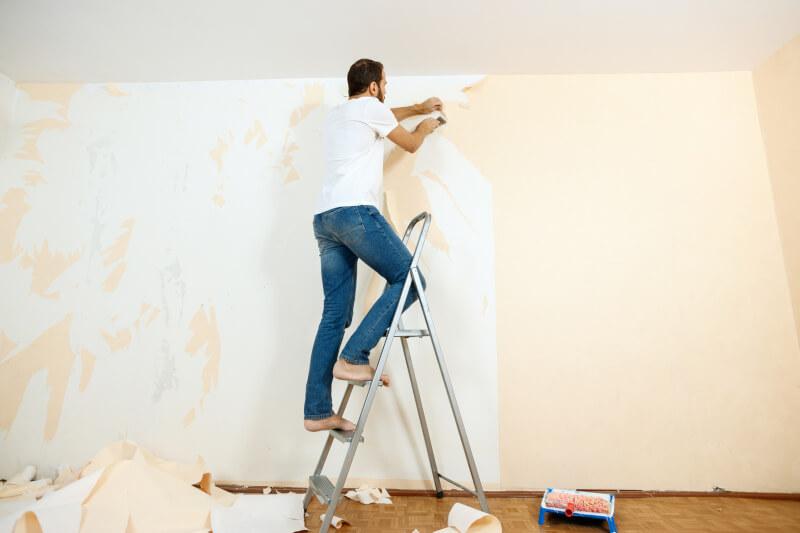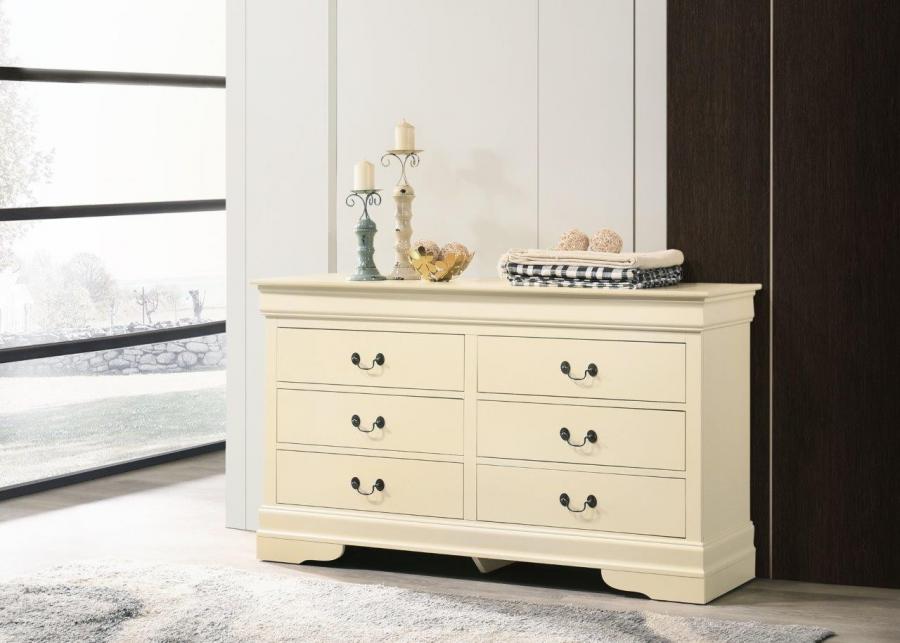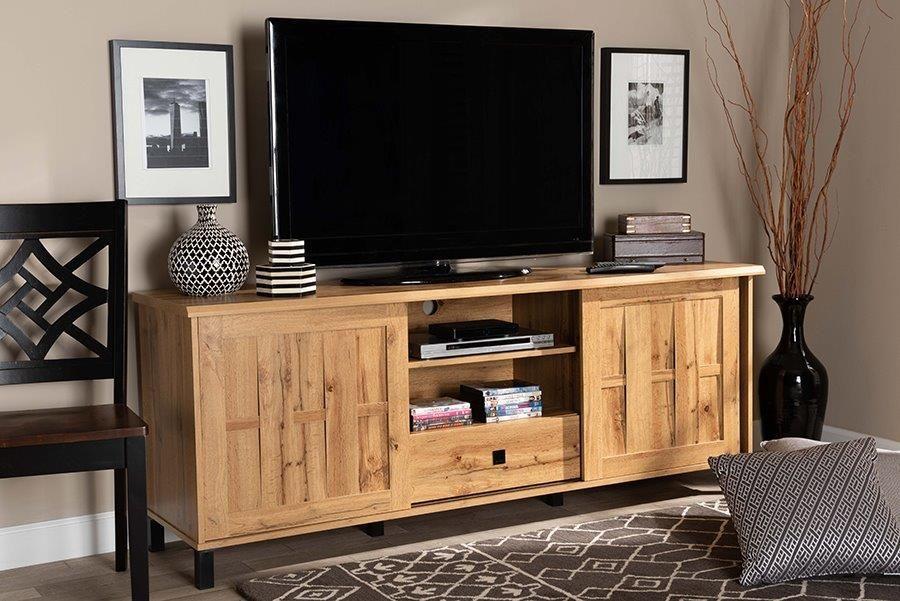
Refreshing a room often starts with new wallpaper or a fresh coat of paint. But before you can do that, you have to clear your walls. Removing old wallpaper takes a bit of effort and time, but it may not be as hard as you imagine. With a few simple steps, you can prepare your walls for a beautiful facelift.
Questions to Consider First
Before you begin your wallpaper removal project, there are a few details you need to know. Take a few moments to consider these questions. The answers will be vital as you decide how to proceed.
Do You Really Need to Remove Your Wallpaper?
Some people paint or paper right over their old wallpaper. The idea is appealing because it would reduce the work. The only time it's advisable to cover existing wallpaper is if the following three statements are true.
- The current wallpaper is one smooth single layer.
- There are no bubbles, wrinkles, or buckles.
- You start by repasting any loose paper, patching where necessary, cleaning the walls, and applying a primer designed for this type of project.
However, if you don't remove the wallpaper first, you may have some problems with the result. Don't paper or paint over your old wallpaper if:
- There is more than one layer, or you suspect there is.
- Your current wallpaper is vinyl, foil, or has a plastic film.
- Your current wallpaper is made of burlap, glass cloth, or cork.
- You hear crackling sounds when you brush across the wallpaper with your hand.
- The walls have settled and caused tears around the corners of the walls.
- You plan to paint rather than paper.
What Kind of Walls Do You Have?
You need to know what kind of walls are under that wallpaper. There are two types of walls that are usually found in homes. Of the two types, drywall is the most delicate and requires the greatest care.
Plaster walls are usually found in homes that are more than 50 years old. They are constructed of wood-framed walls with wood lathes attached and covered with plaster.
Homes that are 50 years old or newer typically have drywall. Drywall consists of sheets of a chalky substance covered with light cardboard. These are nailed over the wood frames.
To find out which kind you have, knock on the wall. If it makes a hollow sound, it's drywall. You'll have to be extra careful with the scraper or putty knife and the scorer. If it sounds solid and dull, you have plaster walls.
What Kind of Wallpaper Is on Your Walls?
If you weren't the one who put on your current wallpaper, you might not know what type it is. This is critical information, as it will determine what removal methods will work best. Test the paper by loosening a corner with a putty knife. Here's what the results mean:
- Does it pull away easily? If so, it's strippable wallpaper.
- Does it pull away but leave the backing behind? It's peelable wallpaper.
- If it doesn't budge at all, you have traditional wallpaper.
You can identify washable or moisture-resistant wallpaper by looking at the surface of it. If it has a thin, see-through coating, it's moisture-resistant or washable. Vinyl wallpapers are washable, and you can identify them by pulling on the corner. The top transparent layer will come off in a large sheet.
If you recognize that you have vinyl or other textured wallpaper, you’ll know to give it special attention with the wallpaper scorer. After all, it’s made to resist water, and it will unless you score it well.
Gather Tools and Materials
Set yourself up for success by gathering all the tools and materials you'll need before you do anything else. Here are some of the items you might need, depending on the wallpaper removal method you choose.
- Safety goggles
- Rubber gloves
- Large trashcan with a trash bag
- Ladder
- Work lights
- Painter's plastic tarp
- Old towels
- Painter's tape
- Putty knife
- Utility knife
- Wallpaper scorer
- Screwdriver
- Rags
- Sponges
- Soap
- Household pressure spray bottle
- Bucket
- Wetting solution (see "Wet the Paper" below)
- Wallpaper steamer
Protect Everything
Removing wallpaper might seem like a low-risk activity. But you might be surprised at how much damage it can cause. So, before you begin, be sure you protect everything in the room as well as yourself. Take the following precautions:
- Take down anything hanging on the walls, such as paintings or shelves, and put it in another room or cover it.
- Move or cover all the furniture.
- Wear safety goggles and rubber gloves any time you're working with chemicals or a wallpaper steamer.
- Protect the floors and woodwork with a painter's tarp.
- Cover any electrical outlets with painter's tape.
- Turn off the electricity to the room at the breaker box or fuse box.
To protect the floors and woodwork, place old towels around the bottom edges of the walls. Then, place the plastic painter’s tarp over the towels and out into the room for at least three feet. Use painter's tape to secure the tarp to the baseboard. Finally, put painter's tape over any other woodwork in the room and covering any electrical outlets. Because your outlets are turned off, you'll need to set up work lights in the room. You can also use painter’s tarps to cover any furniture you don’t want to move.
Don’t do this with your plastic drop cloth! Make sure you use painter’s tape to tape down the plastic tarp along the wall!
Wallpaper Removal Techniques
Taking down wallpaper is simple, but you have to have a little know-how. Depending on the type of wallpaper and the method you use, you might need to use any or all of the following techniques.
Pull Up Any Loose Wallpaper
The first step in actually removing the wallpaper is to pull away any loose paper. Inspect the walls. Whenever you see a curled-up edge, a bubble, or a tear, there's your opportunity to pull off wallpaper without any further preparation.
The more wallpaper you can pull of easily, the less you will have to do later on.
Wet the Paper
Wetting the paper helps it release from the walls. There are several solutions you can use to wet it.
- 1/4 fabric softener to 3/4 hot water
- 1/3 vinegar to 2/3 hot water
- Pre-prepared wallpaper removal liquid
- Wallpaper removal gel
- Hot water in a wallpaper steamer
If you’re using fabric softener or vinegar, measure it before you put it in the spray bottle. Then, you can be sure you have the most effective mixture.
If you're using a liquid solution or store-bought wallpaper removal liquid, you can apply it using a household sprayer. A simple spray bottle will work. Even better, use a household pressure spray bottle.
Gel remover can be applied with a sponge or roller. Of course, if you're using steam, you put it on with the steamer device.
It's usually best to only wet one section at a time. Otherwise, the wallpaper will begin to dry, and you'll have to wet it again. Instead, wet no more than a three- to four-foot section and wait long enough for the moisture to soak in a bit. Here are the times to wait for each type of wetting agent.
- Fabric softener/water – 2-3 minutes
- Vinegar/water – 2-3 minutes
- Wallpaper removal liquid – as specified by the manufacturer
- Wallpaper gel – 20-30 minutes
- Wallpaper steamer – 30 seconds for each spot the steam covers
You also need to make sure you don't oversoak the walls. Stick to the recommended soak times, and then get to work removing the paper.
Score the Paper
Scoring the wallpaper may be necessary any time the paper won't absorb the liquid or gel you're using to wet it. To do this, you need a wallpaper scorer. A scorer is a small, round tool that you run over the surface of the wallpaper. It has small teeth that make holes in the paper so that it will take in water.
To score the paper correctly and safely, move the scorer in circular patterns. Use light to moderate pressure. Pushing too hard on the scorer can create deep grooves in the walls that you will have to repair before you can paint or repaper. Be especially careful if you have drywall. Then, rewet the paper and wait a few minutes so it can absorb the liquid or gel.
Scrape Off the Wallpaper
With the wallpaper wetted and scored if necessary, you're ready to take off the paper. Pry off a corner of the wallpaper or start with an edge where you've already pulled off the loose paper. Hold the putty knife or scraper at a 45-degree angle and apply moderate pressure to scrape and lift the piece. Sometimes, the wallpaper will come off in small pieces. Other times, you'll be able to pull on the loose edge and take off larger portions at a time. As you go, place all the old wallpaper in the trashcan to save yourself cleanup time when you finish.
Here’s how to hold the scraper while removing the old wallpaper.
After you've completed one section, check to see if there are any bits of paper left. If so, rewet that part and use your putty knife to remove those pieces. When the walls are free of wallpaper, use the screwdriver to take off the outlet covers. Then, remove the wallpaper that was beneath them.
Always avoid applying too much pressure with the scraper. Pushing too hard can leave you with holes in your wall, like this:
Remove the Adhesive
Once you've removed the wallpaper itself, you'll still have the wallpaper glue left on the wall. You can use soap and water to remove that adhesive. Just sponge over the wall until it feels smooth and clean to the touch. Wallpaper removal gel can be especially helpful in getting off the old wallpaper paste. Spray it on the wall, wait 15-20 minutes, and use the putty knife to scrape off the glue along with the gel. Or, use trisodium phosphate mixed with water. Wipe it on, rinse it, and towel-dry the wall.
You can get trisodium phosphate at a home improvement store. It looks similar to baking soda, but it works much better at removing wallpaper adhesive.
Clean the Walls
Make sure your walls are completely clean before you stop working. Use hot water one last time to remove any tiny bits of paper or glue that remain.
You can use a sponge to wipe down your walls. A sponge mop works perfectly to clean those hard-to-reach high places. When you finish, let the room dry until the next day. Then, it will be ready for that beautiful new wallpaper or a fresh coat of paint.
Using a Wallpaper Steamer
Wallpaper steamers can be a bit difficult to use, but sometimes it's the only effective way to remove stubborn wallpaper. Before you use a wallpaper steaming device, read all the instructions provided by the manufacturer.
The procedure usually works like this:
- Add water to the steamer reservoir.
- Turn on the steamer and wait until steam begins to come out.
- Place the steam pad on the wall and wait 30 seconds.
- Take the pad off the wall and use the scraper to remove the paper.
Special Directions for Newer Types of Wallpaper
If you have traditional wallpaper, you can use the above techniques to remove it. However, newer types of wallpaper may need to be handled differently. Here's how to strip off non-traditional wallpapers.
Removing Strippable Wallpaper
You can remove strippable paper without even using water or chemicals. Loosen the bottom corners of a strip, using your fingers or a putty knife if necessary. Grab the bottom edge and pull the wallpaper up until it comes off. If the wallpaper doesn't release, you need to get out your utility knife. Cut perpendicular lines about 10 inches apart. Then, use your fingers to loosen the section and pull it free.
Removing Peelable Wallpaper
Peelable wallpaper has two layers. The topcoat peels off easily, just like strippable paper. However, peelable wallpaper leaves behind a layer of paper backing. For this layer, you'll need to use the same methods as for traditional wallpaper.
Removing Washable or Water-Resistant Wallpaper
Washable or water-resistant wallpaper takes extra effort to remove. The whole idea of this type of paper is that it won't soak up water, whether you're cleaning it or showering in the same room. So, you'll need to break through the plastic layer before any liquid or gel you apply will soak in. Use the scoring tool to open up holes where the water can penetrate the paper. Spray water into the holes and wait 10 minutes. Then, you're ready to use your putty knife to scrape away the wallpaper.
These wallpapers are harder to remove, so you'll likely need to use chemical removers to get them loose. Buy a wallpaper removal solution from your local hardware or home improvement store. Apply it, wait as long as the instructions recommend, and then remove the paper with the putty knife.
More Wallpaper Removal Tips
Here are a few more tips for removing wallpaper.
- Allow yourself a full day to remove the wallpaper from one room.
- Always work one section at a time.
- Tear off from top to bottom, especially if you're using chemicals or steam.
- You can use a utility knife to cut the wallpaper along borders and cabinets.
- Gel is less messy than liquids. It's also easier to use precisely.
- When you finish, patch any nicks or gouges with sandable filler or spackle.
FAQ
What is the easiest way to remove old wallpaper?
By using a wallpaper removal solution. When you buy a pre-mixed wallpaper removal solution, you have a liquid that's specially formulated for the task at hand. Use your wallpaper scorer so it will soak in well. Then pry it up with your putty knife and pull it off before you remove the adhesive.
What is the best homemade wallpaper remover?
Fabric softener and water. Fabric softener is made to soften up fabric, and it does the same to wallpaper. It not only makes the wallpaper moist enough to let go of the wall. It also leaves your room with a more pleasant smell than vinegar or chemical wallpaper removal solutions.
How do you remove old wallpaper without damaging drywall?
Apply moderate pressure. Whether you're using a putty knife or a wallpaper scorer, it's essential that you don't push too hard. Too much pressure will make gouges in your drywall or plaster. It also helps if your putty knife has dulled, rounded edges. If the one you have is too sharp, you can sand it down to smooth the edges.
How much does it cost to take down wallpaper?
$0-$100. Many people keep all the tools and materials needed on hand for regular use. After all, you can use a putty knife, a sponge, vinegar, or fabric softener for many projects. Wallpaper scorers and removal liquids and gels aren't expensive. A wallpaper steamer usually requires a deposit of about $50 and around $40 for a day's rent.
Can you use an iron to remove wallpaper?
Yes. You can use a steam iron the same way you would use a wallpaper steamer. Dampen the wall with hot water first. Otherwise, the iron might damage the wall. Then, put the iron on the wall until the wallpaper begins to loosen. You might need to push the steam button if it isn't putting out enough already.
How long does it take to steam off wallpaper?
10-30 seconds per spot. You'll need to hold the steamer pad against the wall for 10 to 30 seconds before the wallpaper will begin to loosen in the area the pad covers. How long it will take for the entire room depends on the size of the room, the steamer pad's size, and how fast you work.
What will dissolve wallpaper glue?
Trisodium phosphate. Mix a small amount of TSP with hot water. Wipe this solution on the wall, rinse it off, and dry it with a towel. Trisodium phosphate is a powder that will release the wallpaper adhesive easily. It's very inexpensive, usually under $5 for a one-pound box.


































